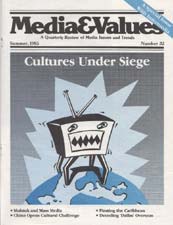Television in Trinidad
|
This article originally appeared in Issue# 32
|
I can't ignore the effect of media on local communications, institutions and even local cinemas here on Barbados.
When two youngsters are convicted for duplicating a murder they saw on television, it's frightening. And when events on Dallas or Days of Our Lives replace "How are you?" and "Have a nice day," you begin to wonder about interpersonal communication.
But all the same, innovative uses of technology can be used to vastly improve local education. When properly organized, television's effectiveness as a teacher cannot be denied. For example, the West Indies Distance Teaching Experiment uses satellite hook-ups to link the main campuses on Jamaica, Barbados and Trinidad with students in Antigua, Doninica and St. Lucia in the Eastern Caribbean.
The experiment uses the INTELSAT satellite and microwave, UHF and tropospheric scatter to facilitate teaching in a wide range of subject areas; conferences (e.g. on Caribbean art forms), and workshops for creative writers, science students and others. Another example is the "Creole bacchanal." Since 1831, this carnival and its supporting art forms – calypso and steel band music – have been the life support for the culture in Trinidad and Tobago.
When television came to Trinidad, carnival performers created hours of programs which widened their exposure and broadened their audience. This not only served as a mirror for this society, it helped reduce the need for cultural imports.
Meanwhile we're developing our own version of Television Awareness Training (T.A-T) to provide an understanding of TV, VCRs and satellite transmission. It's clear that understanding is the first step towards controlling the media, hands on or otherwise.



